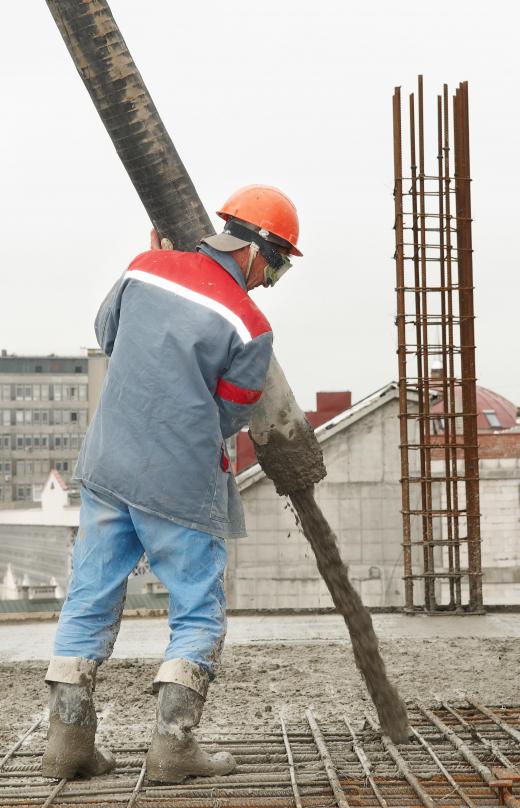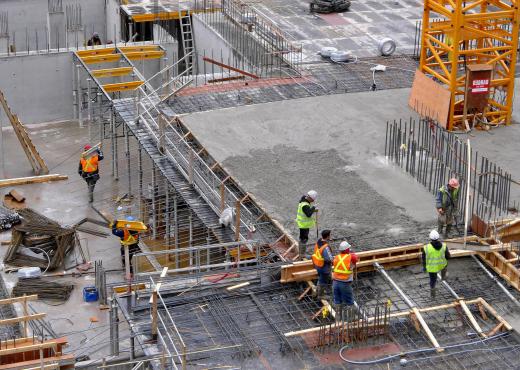A concrete vibrator is a construction tool used on concrete pouring sites. A variety of manufacturers build these machines and an assortment of attachments designed for multiple applications. A vibrator is used to ensure that a pour is even and free of air bubbles so that the concrete will remain strong and have a smooth finish even afterthe formwork is removed. While not necessary for small jobs, this tool is essential on large load bearing projects.
These machines range in size from small battery-powered wands to much larger plug-in versions that be used on very deep pours. In all cases, a concrete vibrator that can reach the bottom of the pouring forms should be used, ensuring even treatment of the entire concrete pour. Attachments are selected on the basis of the depth of the pour and the type of concrete being used.

A concrete vibrator uses an off-centered weight, which is spun as much as 10,000 times a minute, causing large air pockets in the concrete to disperse as the concrete is shaken. Especially in pours of low slump concrete, which uses minimal water, the use of a vibrator is essential to ensure that the concrete does not bubble or form holes. In cases where consumers will be looking at the finished concrete, as is common in some schools of design that employ concrete counters and floors, this tool will help create an even and attractive surface, rather than one that may be slightly ragged.

Proper use of a concrete vibrator requires some training. The head should always be slowly lowered into the pour and pulled out gradually to avoid the formation of an air pocket. The tool should never be dragged through a pour, because it will leave a groove in the concrete behind it. The amount of time required varies depending on the mix, but it does not usually take more than 30 seconds to settle the concrete sufficiently and move on to the next section of concrete.
If a concrete vibrator is used incorrectly on a concrete mix with a wide range of material sizes, it may cause the larger rock pieces to settle to the bottom, making the concrete weaker. In addition, the tool can push rock and gravel away from the area being shaken, causing weaker concrete paste to fill the area, which may result in instability. The goal is to build a strong matrix of material that will withstand years of use. If the vibrator is used correctly, the operator will see large bubbles floating to the surface of the concrete pour, and a layer of mortar will appear on the surface to indicate that the concrete is evenly mixed and unlikely to have air pockets and honeycombing.
Ever since she began contributing to the site several years ago, Mary has embraced the exciting challenge of being a About Mechanics researcher and writer. Mary has a liberal arts degree from Goddard College and spends her free time reading, cooking, and exploring the great outdoors.

